Behind the desk of Hollenbeck Middle School’s principal is a shrine of sorts dedicated to prominent Garfield High School math teacher, the late Jaime Escalante (1930 – 2010). Images of Escalante are situated on top of a bookshelf; a framed display of the United States Postal Service’s 2016 Escalante stamp hangs on the wall. Our after-school tour guide, Assistant Principal Raul Garcia, points out one photo in particular. It shows Escalante flanked by five young women and five young men all dressed in semi-formal attire, corsages, and boutonnieres are affixed to their clothing. Garcia says that Hollenbeck’s principal is among the students. The photo caption reads “Stood and Delivered” – Garfield’s A.P. Calculus Class of 1982.
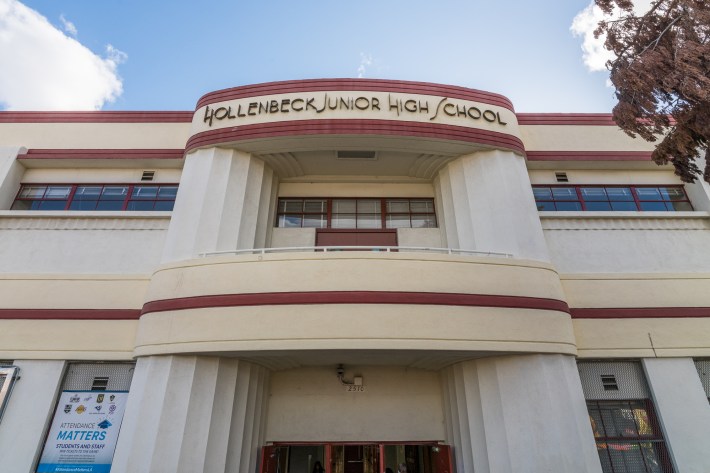
The formidable Escalante and the East Los Angeles school at which he taught, James A. Garfield High School, garnered attention upon the publication of a 1982 L.A Times report by staff writer Keith Love. The headline: “14 Students Retake Test After Scores Are Disputed – Principal Charges Minority Bias”. The story detailed allegations made by the Educational Testing Service (ETS) that more than a dozen of Escalante’s students might have cheated on the A.P. calculus exam. According to the ETS, the test scores were questionable because fourteen of the eighteen students who took the exam all solved one problem in the exact same manner – the other four students didn’t have that particular problem on their tests—and multiple choice responses were identical. Escalante simply responded, “The explanation is that they were taught the same material in the same way.” Twelve of the 14 students retook the test—one had already been accepted to Columbia University and the other joined the military—and all 12 passed with scores of four and five, five being the highest mark.
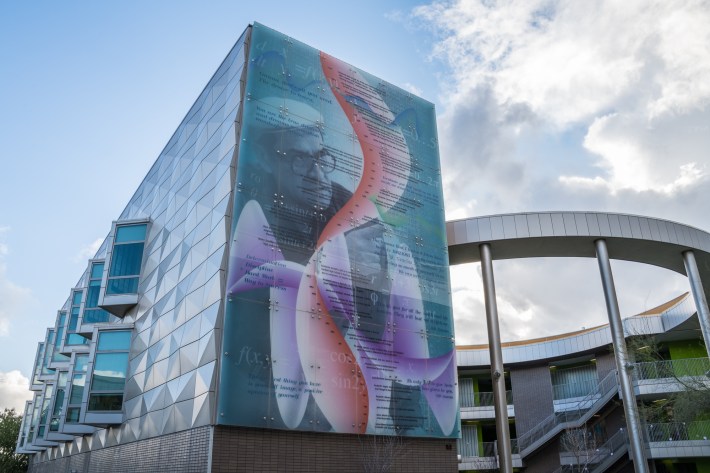
The story was the basis for 1988’s Stand and Deliver, starring Edward James Olmos as Escalante and Lou Diamond Phillips as Angel Guzman, a fictional gang-member student of Escalante’s. The film was produced by the PBS anthology TV series American Playhouse, and it first premiered as Walking on Water at the Mill Valley Film Festival in Northern California.
The opening shot of the film starts tight on a fast-moving stream of water. As the camera pulls back and tilts up, it’s revealed to be the L.A. River just south of the 4th St. Bridge. Stand and Deliver producer/co-writer Tom Musca says, “It looks like a nice river for a second, then it’s a concrete jungle, and then the Walking on Water title comes in on that.” When Warner Bros. picked up the film after a bidding war between studios, there was concern over the title and the film’s theatrical release butting up against the Easter holiday. Musca recalls the studio saying, “If we go out with Walking on Water, no one’s going to see it. They’re going to think it’s a religious film.” While at Warner Bros., Musca and director/co-writer Ramón Menéndez discovered a track called “Stand and Deliver” by ‘80s pop-rock band Mr. Mister. The film was retitled—using the song in the end credits—and released in the United States on March 11, 1988. Olmos’ performance earned an Academy Award nomination for Best Actor. In 2011, the Library of Congress selected Stand and Deliver for the prestigious National Film Registry.
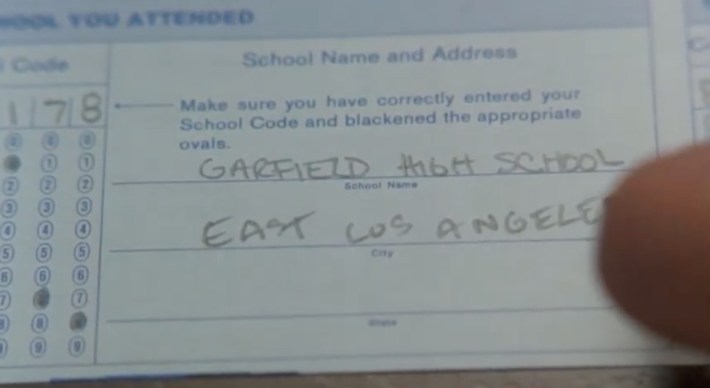
Stand and Deliver was shot predominantly on the Eastside between Boyle Heights, City Terrace, Aliso Village, and East L.A. But other locations included the Bob Hope Patriotic Hall in downtown (the ETS confrontation scene between Olmos and Andy Garcia) and stretched as far west as Baldwin Hills (the Escalante family home) and Will Rogers State Beach in Pacific Palisades (the post-exam celebration scene).
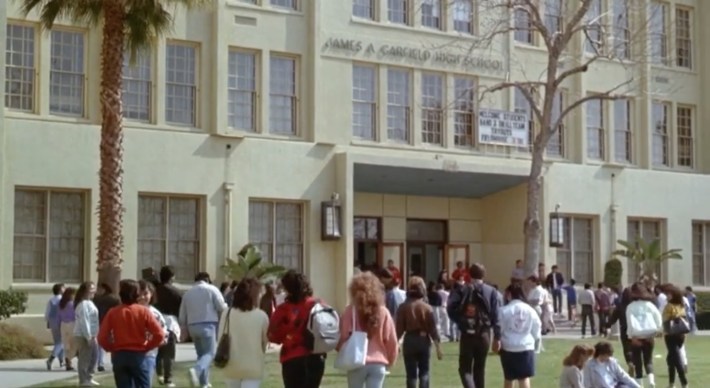
But it’s Garfield High School that is the film’s main setting.
So, why is L.A. TACO taking a tour of Hollenbeck Middle School?
The filmmakers indeed shot at Garfield but also doubled parts of the campus at the Boyle Heights’ middle school and Theodore Roosevelt High School, which is situated directly across the street.
Musca says the intention was to shoot as much as possible at Garfield. “It just gives you authenticity, and you don’t want to alienate people from the neighborhood,” says Musca. “They were called the Bulldogs, and one scene [on the bleachers] where they’re informed of cheating, we have the Bulldogs mural there.” It’s one of the most prominent shots in the film in terms of character of place. However, for filmic reasons, says Musca, various exteriors and interiors were visually preferable at the other two schools.
“It may have been due to scheduling, like when classes were going on or what buildings were available when,” says actor Danny Villarreal, who played the film’s stone-faced gang leader Chuco. “So, I think that could have been part of it, but mainly I think it was the look, like, the right-looking classrooms.” He adds, “I do know that [the late] Tom Richmond, the director of photography, had a very specific eye, and he found some things more interesting than others.”
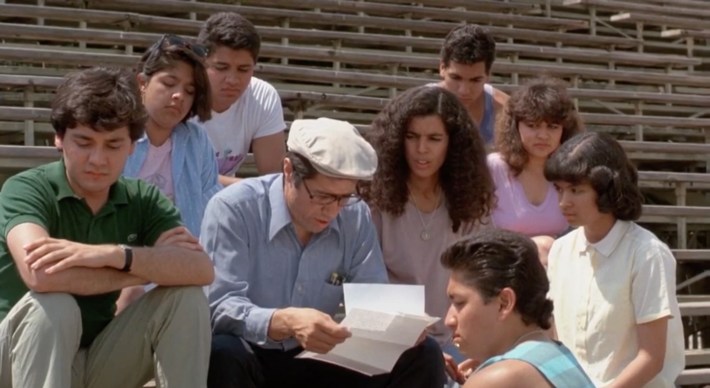
Photo via Warner Bros. Pictures.
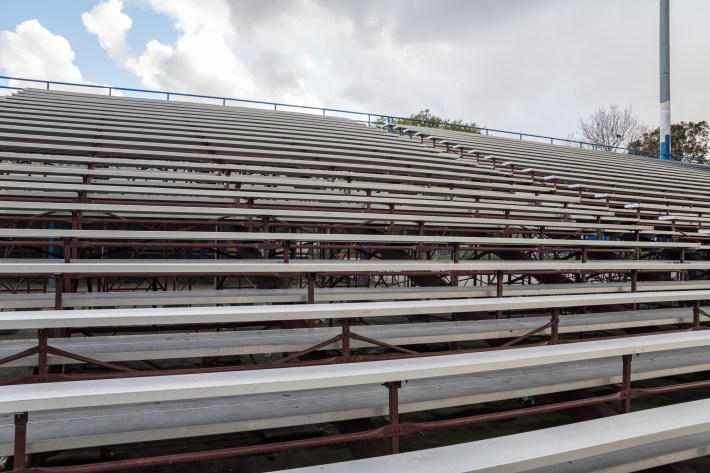
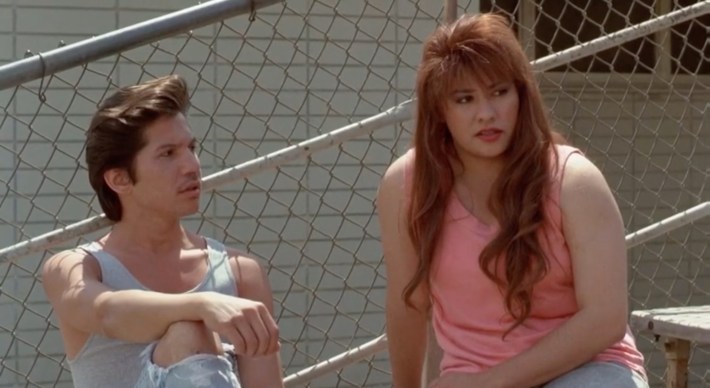
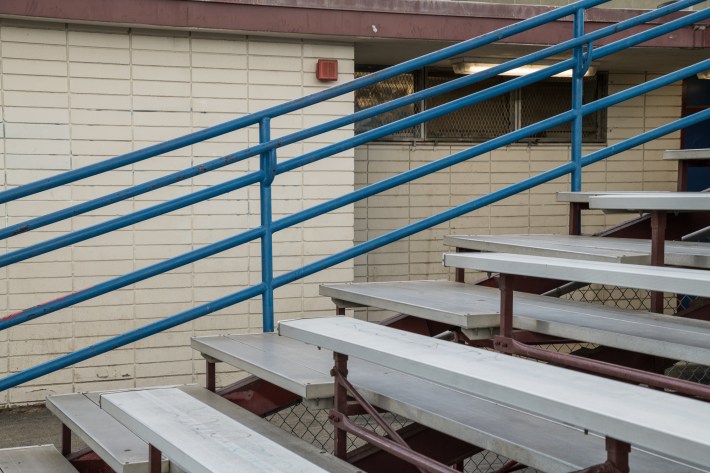
Villarreal, through various connections, started on the film as a production assistant and became a point person for Menéndez and Musca. He immersed the filmmakers in the cultures of the Eastside and trained their eyes on possible locations. “Danny became like the tour guide to East L.A. for us, and he opened up a lot of doors,” says Musca.
“At the time, I considered myself a propaganda minister for East L.A.,” Villarreal tells L.A. TACO. “Anything that was good for us, I would totally start to spread the word about it.” He got his friends' jobs on the movie. He says that any concerns over filming on gang territory weren’t as troubling on Stand and Deliver as they had been on other films. “Stand and Deliver wasn’t really about that,” says Villarreal. Regardless, his time spent in a gang in his youth helped the production’s credibility. “Because I was in Stand and Deliver, everybody was cool with us,” he adds.

Villarreal grew up in Boyle Heights and attended both Hollenbeck and Roosevelt, and it wasn’t until he started going to East Los Angeles College (ELAC) that he ventured anywhere near Garfield. Villarreal says, “When you’re in a gang, you can’t really just roam around. Even within blocks of where you lived, it wasn’t safe.”
Villarreal became involved in all aspects of production. “I would go to meetings with Tom. I was kind of like their Chicano,” he says. Among his many assignments was spending a week videotaping Escalante in his classroom. Later, when the actor hired to play Chuco didn’t work out, Villarreal stepped into the role. In 1992 he played the part of Little Puppet in the controversial Olmos-helmed film American Me.
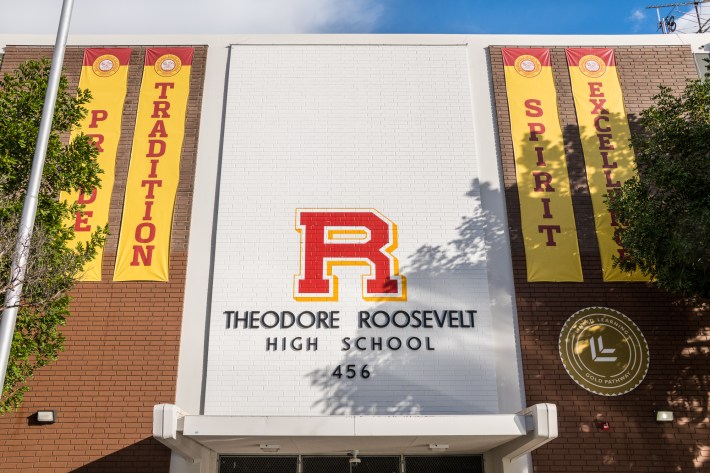
While pinpointing most of the exterior locations between the three schools is fairly straightforward, determining the interiors thirty-five years later is more ambiguous. The film’s location managers could not be reached and Menéndez, through Musca, declined an interview. Musca and Villarreal have vague to somewhat certain recollections of where the interiors were. Musca thinks the classrooms might have been at Garfield while Villarreal believes they were at Hollenbeck. “It’s hard to tell because all the classrooms looks the same,” says Villarreal. The front office may have been at Hollenbeck, Musca suggests. Villarreal and Musca guess that the library exam room was filmed at Roosevelt. Villarreal says it was definitely not shot at Garfield. But even if their memories are correct, many of those interior locations no longer exist.
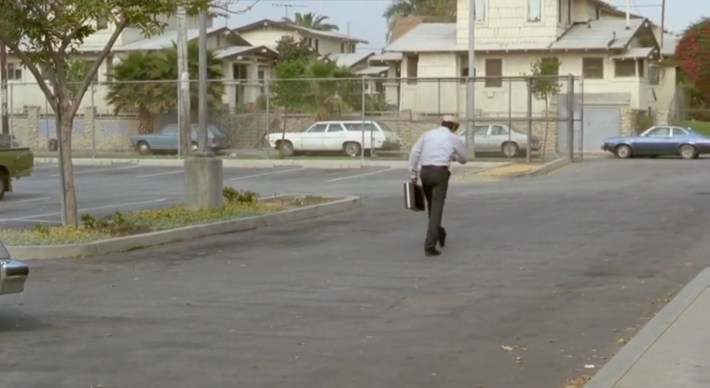
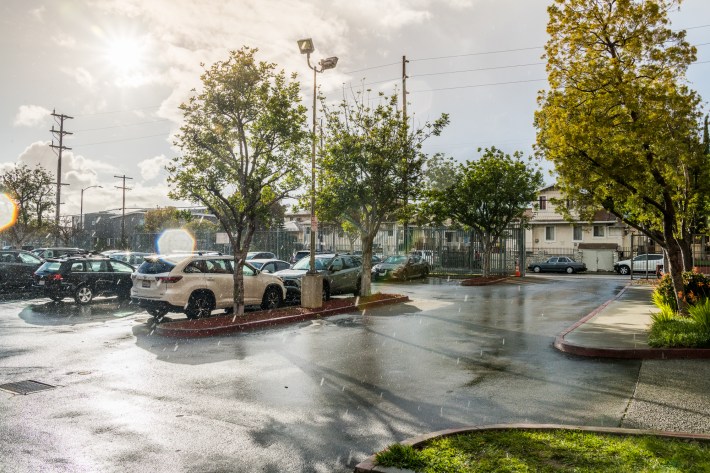
Upon providing screenshots from the film to the school principals, Roosevelt’s principal, Ben Gertner, thought that a hallway location might have been in the school’s 1922 R Building, which was demolished in 2019 as part of a massive campus modernization project that is still ongoing. Gertner says that the library, though it didn’t necessarily look familiar to him, may have also been located in the R Building before a new library was built in 1990. He did confirm, however, that a stairway Olmos fell down in while his character suffered a heart attack was, at one point, located at Roosevelt. A YouTube video featuring multiple clips from Stand and Deliver suggests that a handful of interiors were shot there. Today, the only existing spot at Roosevelt that we can concretely associate with the film is a parking lot on the Mathews Street side of the campus.
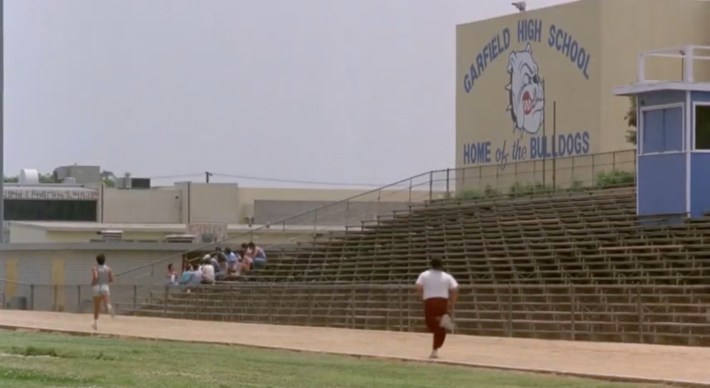

It’s worth noting that of the three schools used for the film, only Garfield High School is thanked in the end credits.
“We never told anybody we shot at Roosevelt,” says Musca, “because Garfield and Roosevelt, I mean, are you kidding? If they [Garfield] knew we had shot at Roosevelt, they would have killed us,” he says, laughing. “They’re rival schools. There’s the famous football game [the East LA Classic].”
Villarreal says, “Garfield was our enemy.”
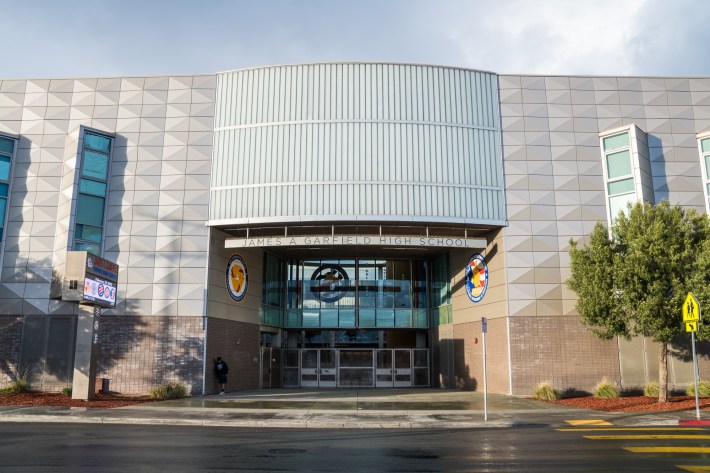
“I do remember people always kind of talking about that, the obvious irony of this movie being about a Garfield High School teacher, but it being filmed mostly at Roosevelt,” says Principal Andres Favela, who’s now in his fifth year at Garfield. “People come [here] all the time,” he says, “and of course, they ask, ‘Was the movie filmed here,’ and my response is always, ‘It was, but just a few shots.’” Favela also couldn’t identify any existing interiors from the film images we provided. So, if the classrooms were filmed at Garfield, as Musca seems to recall, they’re likely long gone. In 2007, an arson fire took out the school’s auditorium, which was connected to the main administration and classroom building. A new auditorium, named for Escalante, and a separate administration building opened in 2014. Confirmed Garfield locations include establishing shots of the old administration building, the athletic field, and two gated entrances on the Fraser Avenue side of the campus.
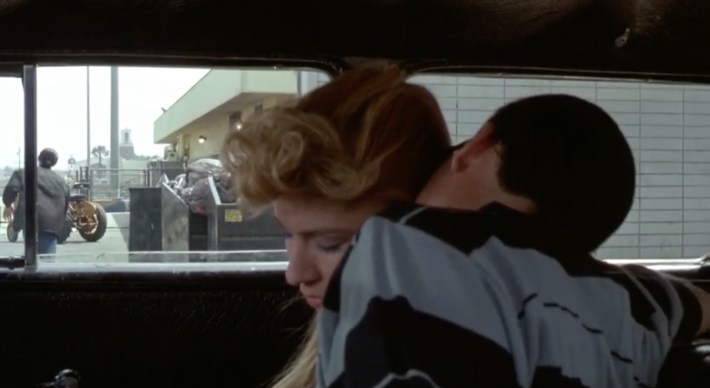
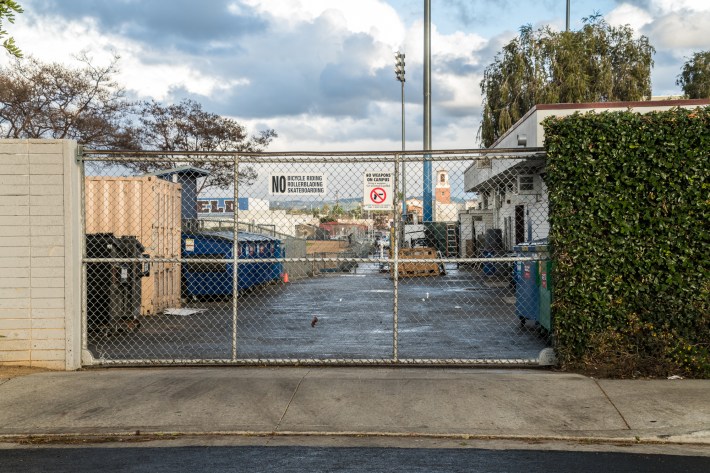
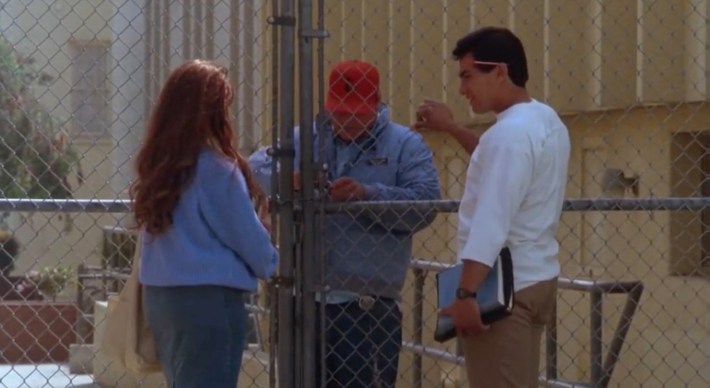
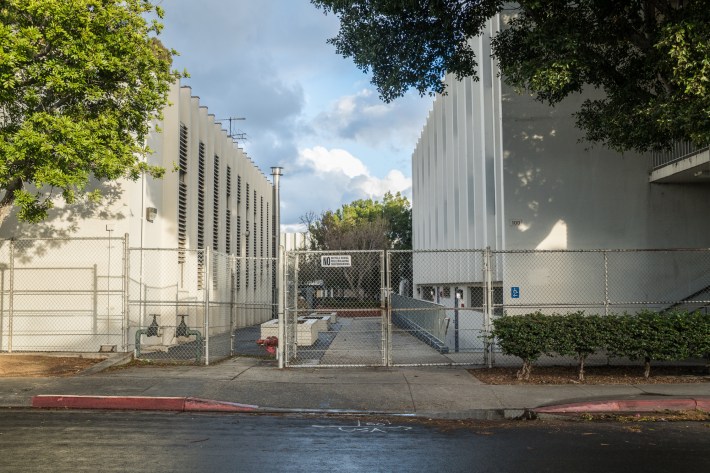
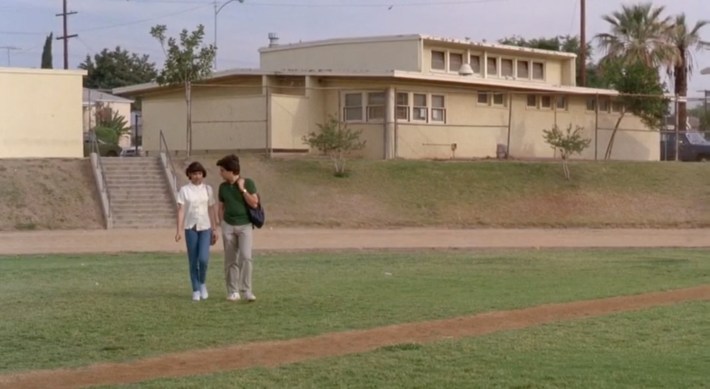

Of the three schools used for Stand and Deliver, Hollenbeck Middle School appears the most unchanged. Its Art Deco facades are years behind some of the contemporary structures found at the two high schools. Hollenbeck was most definitely featured in a short chase sequence that traverses the middle of the campus.
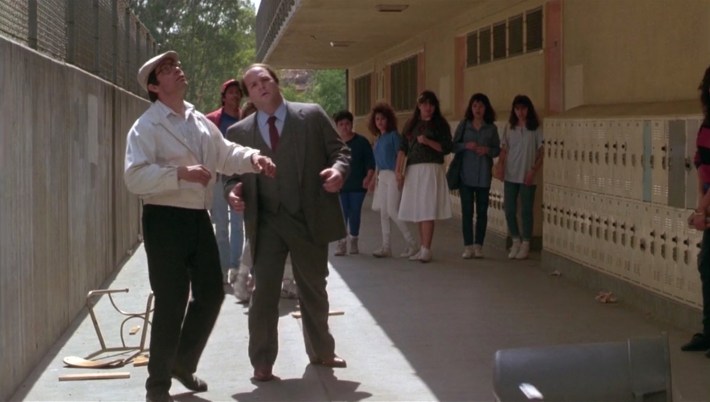
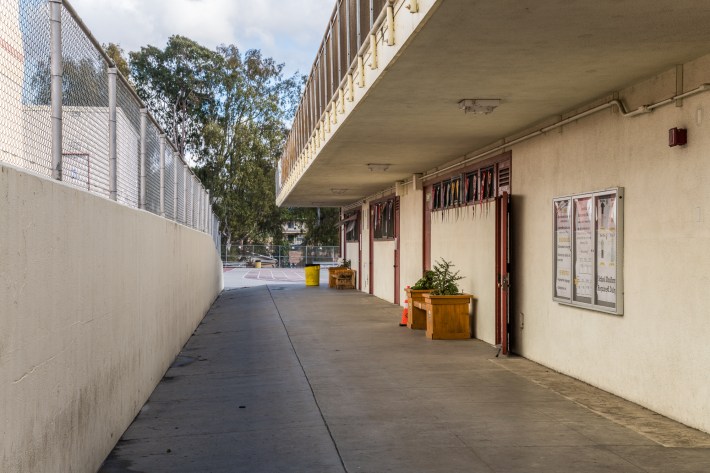
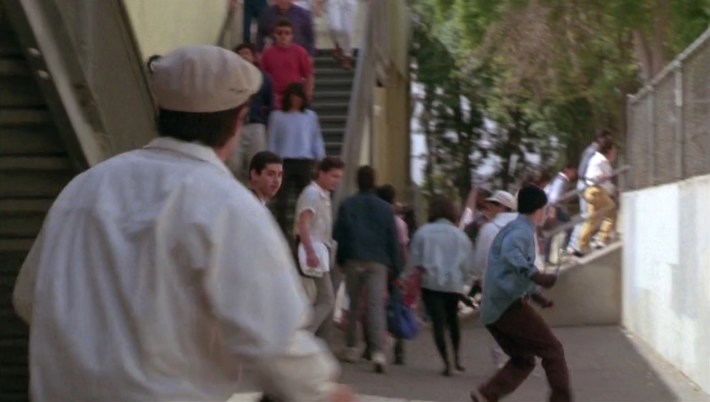

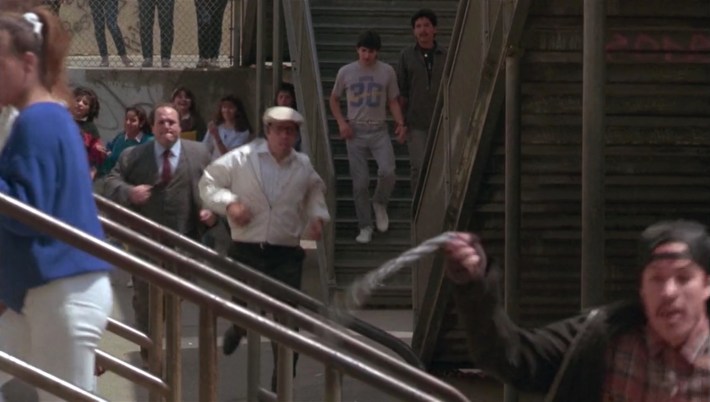
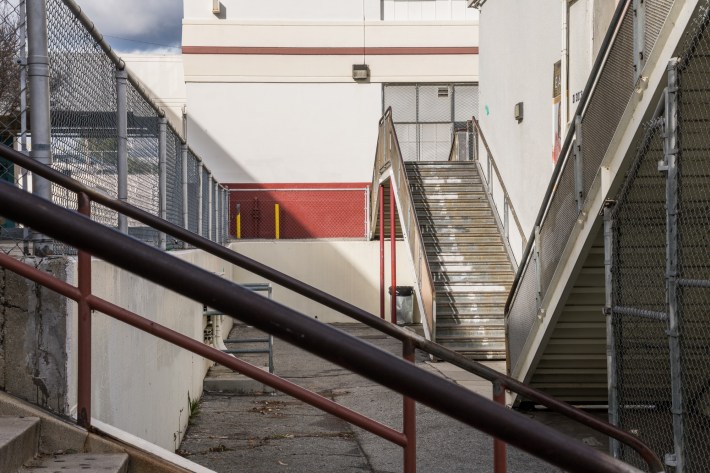
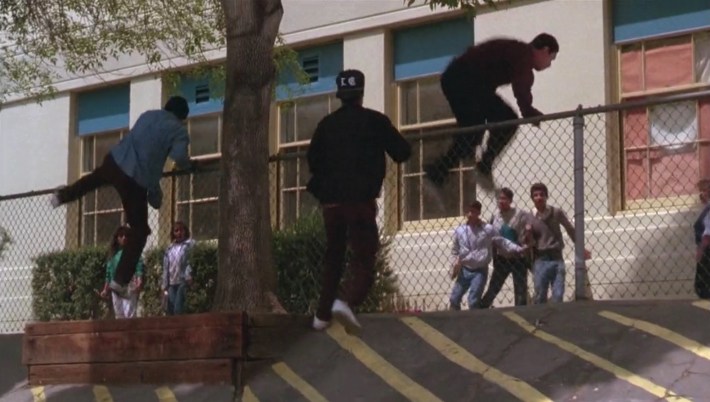
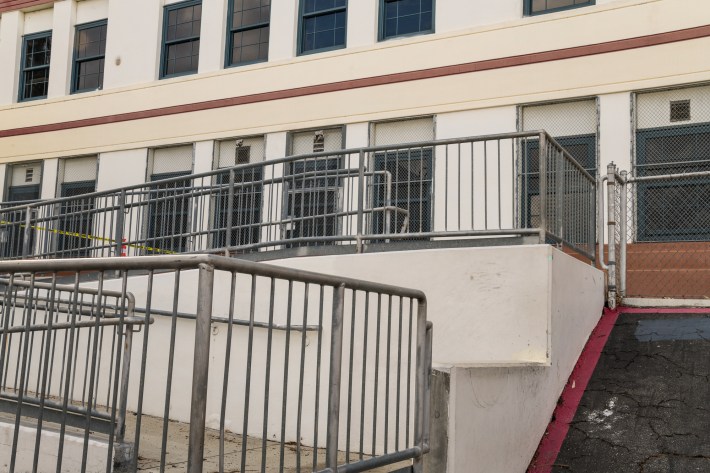
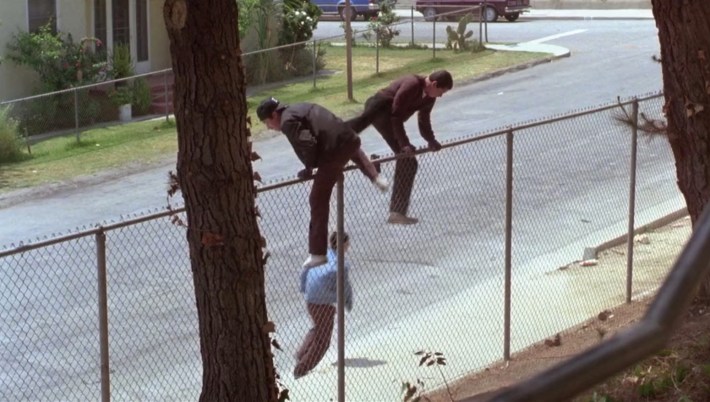

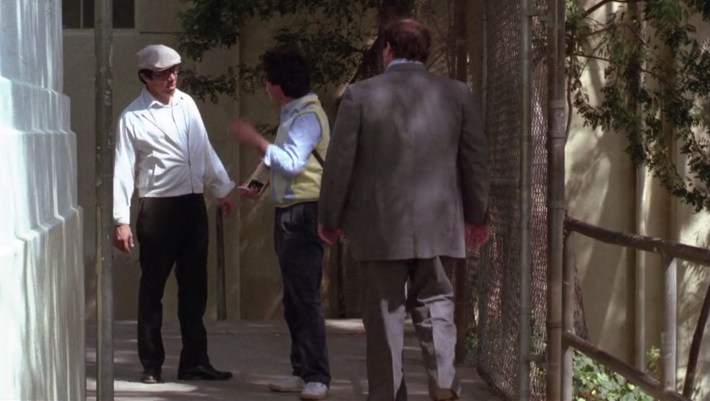
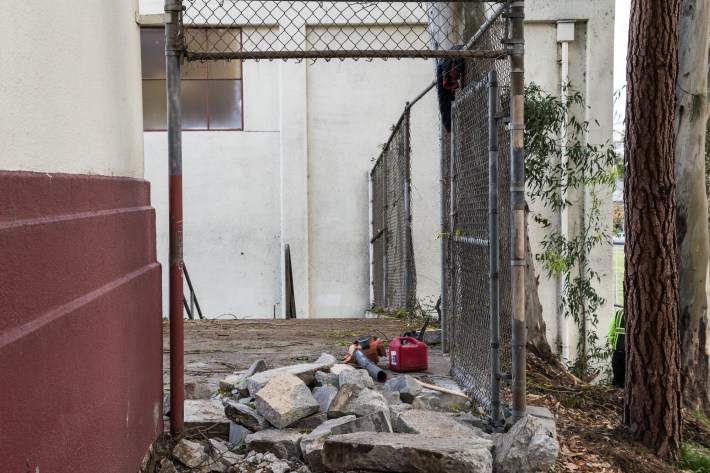
Hollenbeck, in partnership with ELAC, offers the Jaime Escalante Program to student candidates interested in learning advanced math and algebra. Math teacher Maria Ortiz tells us that acceptance into the program is extremely selective, and that Hollenbeck has the highest scores of any schools offering the courses in LAUSD’s Region East. It’s Ortiz who points out the one and only filmed interior we found on this cinematic photo exploration. “They filmed in the main office,” she tells us. This is news to Assistant Principal Garcia.
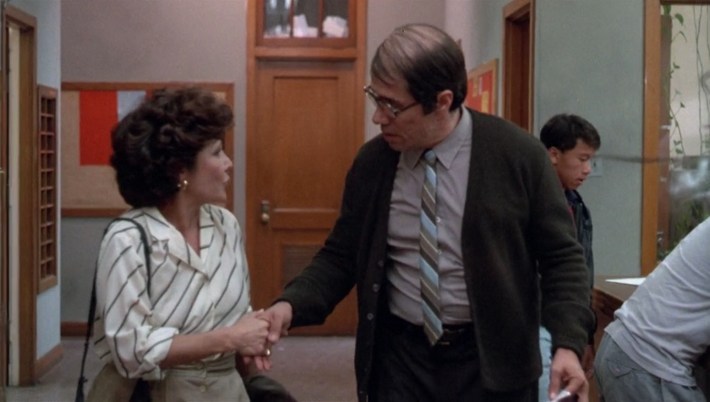
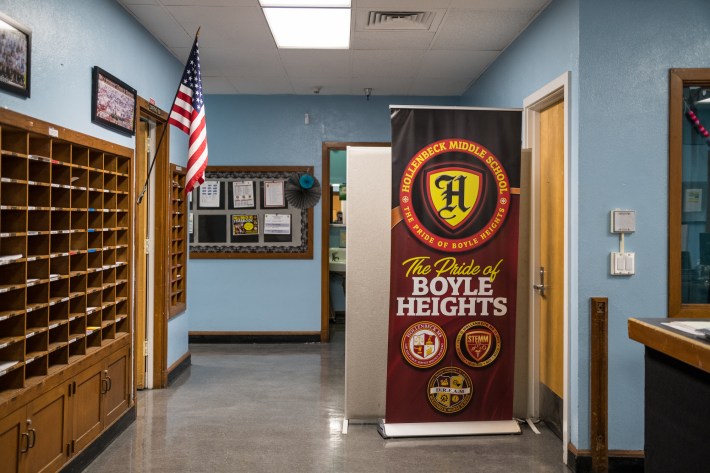
When he walks us back to the office, he tells a couple of the office administrators about the article we’re doing and that he just learned the main office was used in Stand and Deliver. As we line up a shot to recreate an angle from the film, an office staff member replies, “Oh, yeah, this was the office,” like it’s an inside school secret—and if you know, you know.
Just feet away is that photo in the principal’s office of Escalante and his ’82 class, and it hits us that this spot in Boyle Heights may be the strongest existing link between an uncompromising and unconventional Garfield High School math teacher, his unjustly scrutinized students and the classic Eastside film they inspired.
Follow Jared on Twitter at @JaredCowan1.







